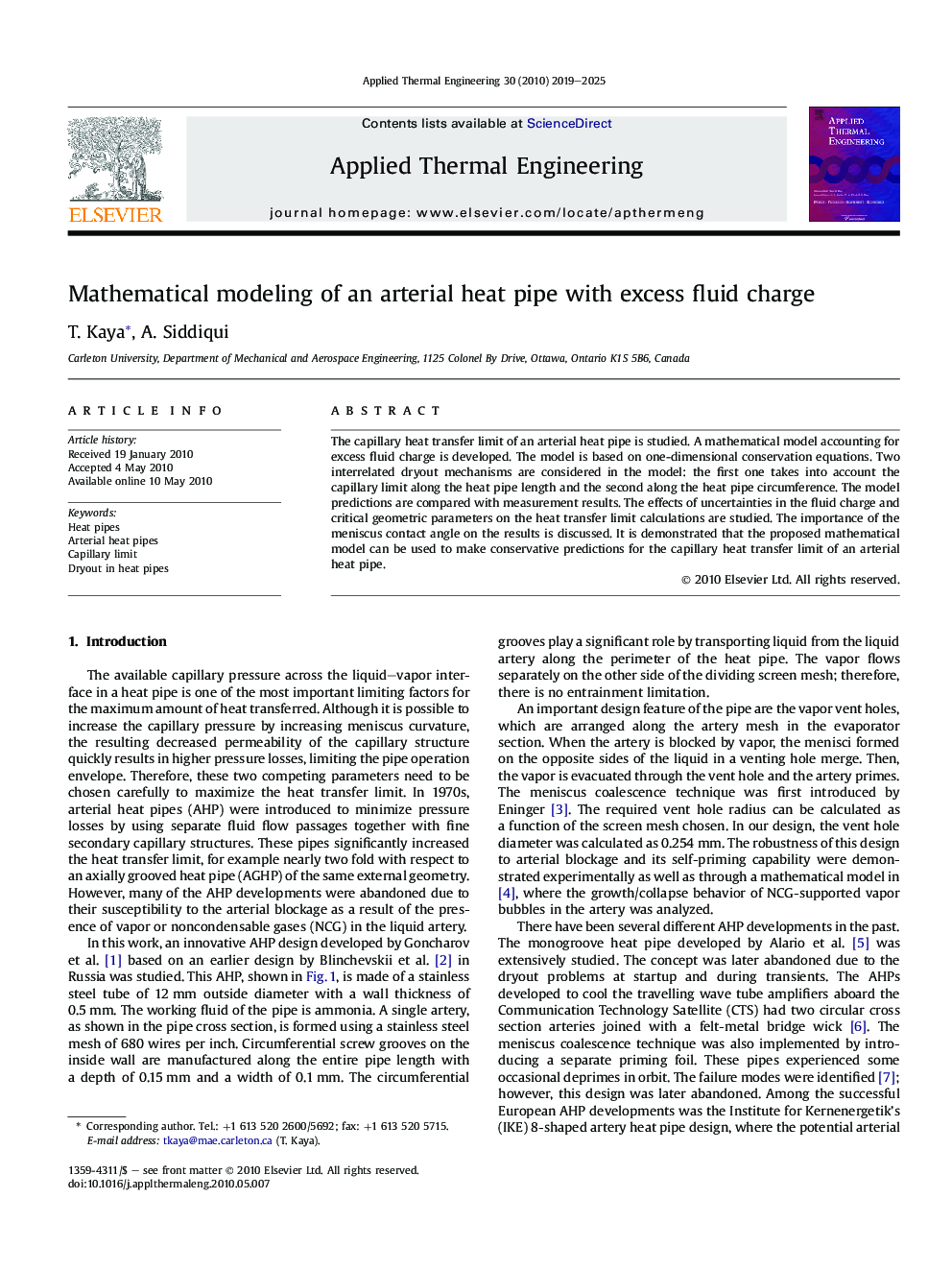| Article ID | Journal | Published Year | Pages | File Type |
|---|---|---|---|---|
| 648212 | Applied Thermal Engineering | 2010 | 7 Pages |
The capillary heat transfer limit of an arterial heat pipe is studied. A mathematical model accounting for excess fluid charge is developed. The model is based on one-dimensional conservation equations. Two interrelated dryout mechanisms are considered in the model: the first one takes into account the capillary limit along the heat pipe length and the second along the heat pipe circumference. The model predictions are compared with measurement results. The effects of uncertainties in the fluid charge and critical geometric parameters on the heat transfer limit calculations are studied. The importance of the meniscus contact angle on the results is discussed. It is demonstrated that the proposed mathematical model can be used to make conservative predictions for the capillary heat transfer limit of an arterial heat pipe.
